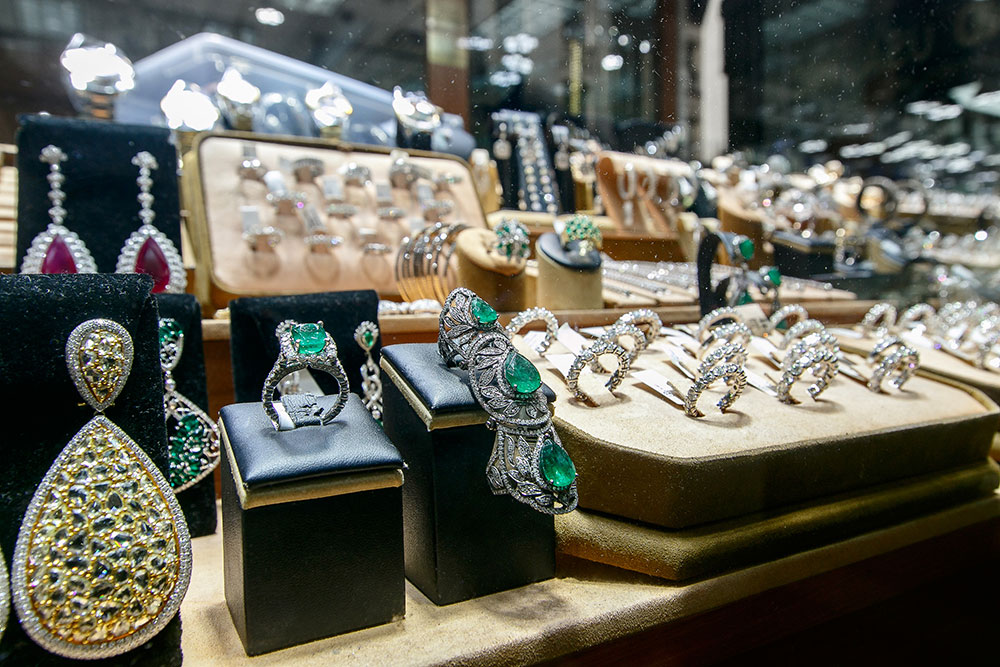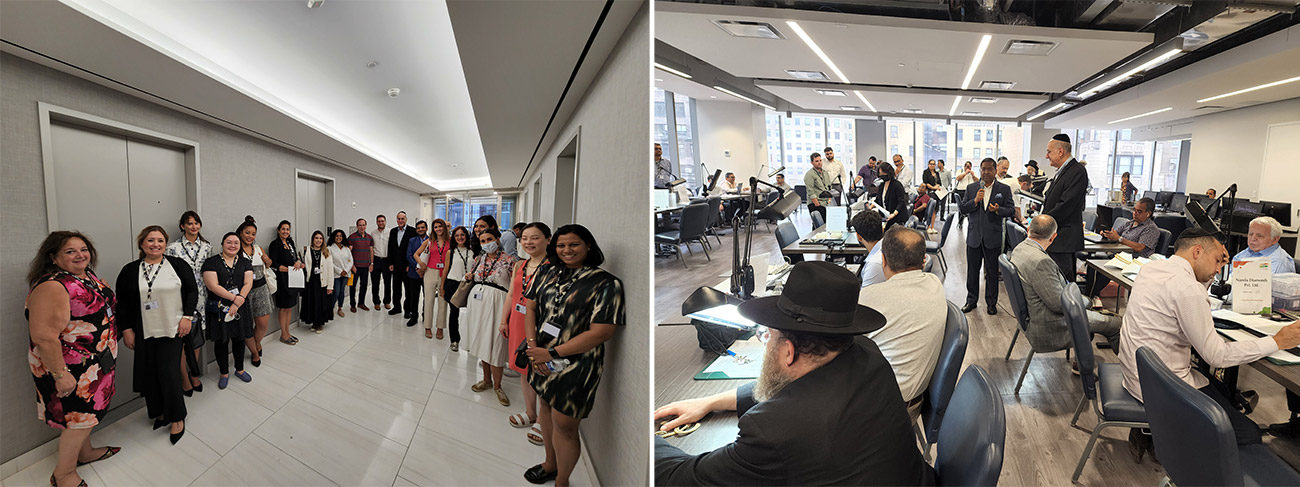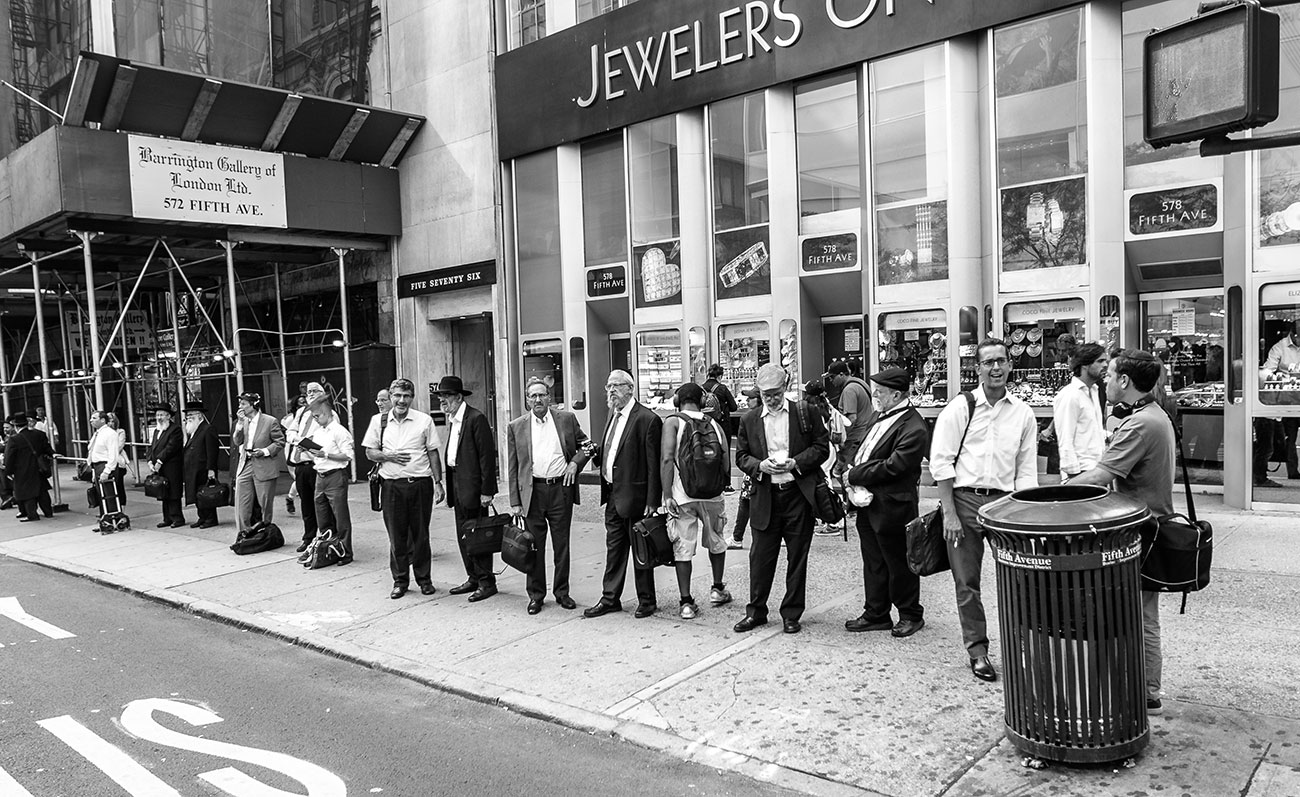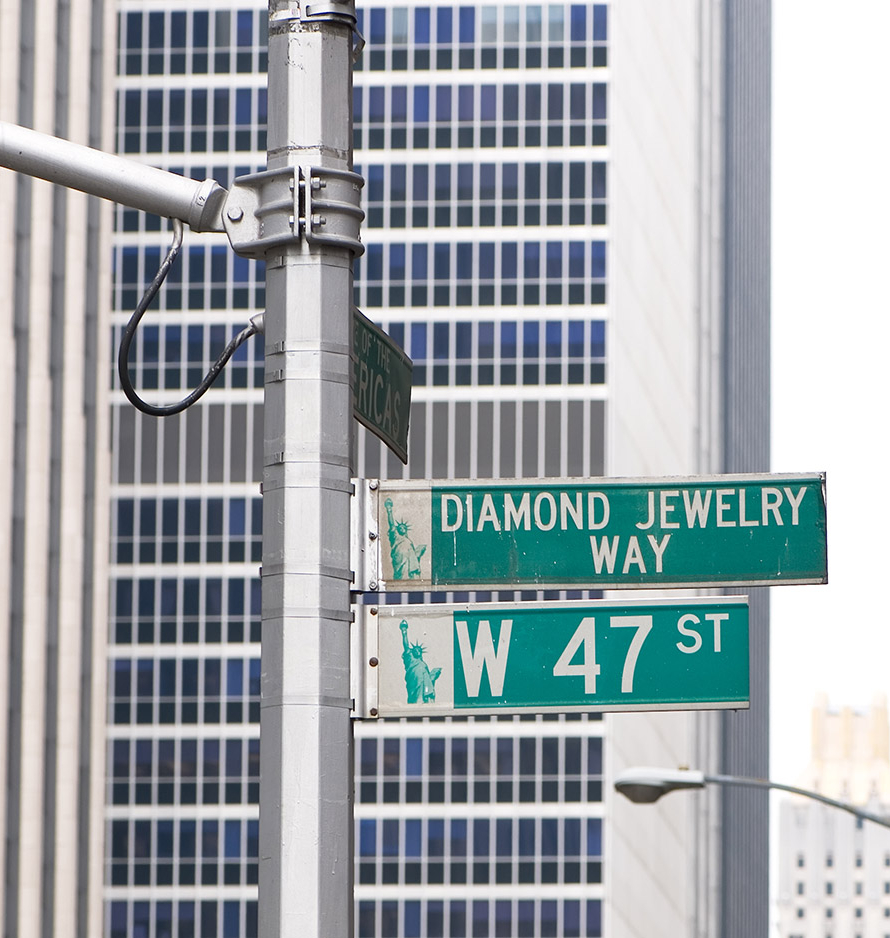The pandemic unexpectedly transformed New York City’s Diamond District on 47th Street into a better version of its century-old self

When the pandemic forced the world to shut down in March 2020, the fear in New York City’s Diamond District was palpable.
The block—West 47th Street, between Fifth and Sixth Avenues—was already suffering from the same changes that had hurt the rest of the industry, particularly the shift to online shopping. Many had begun to doubt the district’s continued viability after Extell Development—owned by former diamond dealer Gary Barnett—announced plans in 2020 to build a hotel on the street (due to open in 2024) and erect several new skyscrapers (presumably filled with non-jewelry tenants).
For many, the lockdowns seemed like the last straw. With the street’s jewelry exchanges classified as “malls,” they would be among the last businesses to reopen. After the Diamond District Partnership, 47th Street’s Business Improvement District (BID), lobbied the city, that classification was changed. Still, the situation was unsettling enough that The New York Times wondered, in November 2020, “Will the Diamond District Survive?”
“At first, it was scary,” says Avi Fertig, executive director of the Diamond District Partnership. “People thought, ‘That’s it, we’re toast.’”
The district has long been an anomaly. It’s one of the few commercial districts left in New York City. Manhattan once had thriving neighborhoods devoted to the toy, photography, flower, fur, antique, and garment industries. Today, however, virtually all of them are indistinguishable from their surrounding streets. And there’s long been a fear that the same would happen to 47th Street.
And yet, nearly three years after the start of the pandemic, the Diamond District is not only still open for business, but is also, arguably, in better shape than before.
“Everyone battled through COVID, and the strong survived,” says Harvey Nagin, owner of the retail store Nagin Jewelry and president of the Diamond District Partnership. “Some of the newer businesses got hit, but a lot of the people are still there.”
Today, foot traffic has not only returned, but it also appears to be up. Nagin says he’s never seen the Diamond District as crowded as it was last year: “Between Thanksgiving and Christmas, it was nuts.”
That’s because 47th Street’s stores and wholesalers benefited from the same COVID-era sales jump that boosted the rest of the industry. There’s also the fact that diamonds and jewelry are traditionally sold face-to-face, given their high value. While many New York City workers have yet to fully return to their offices, most Diamond District workspaces couldn’t operate that way.

“The diamond business is a hands-on business,” says Stuart Samuels, president of the Diamond Manufacturers and Importers Association of America, which maintains an office at 580 Fifth Avenue. “You have to deal with merchandise, and it’s expensive merchandise. It commands a certain level of attention.
“People have gotten more comfortable with Zoom meetings,” Samuels says, “but that doesn’t substitute for in-person. Zoom is still second-best.”
The pandemic demonstrated that “the Diamond District has the ability to withstand a considerable shock,” Fertig says.
Even the Diamond Dealers Club (DDC)—the 47th Street bourse whose future has often appeared tenuous—held its own during the pandemic, says president Elliot Krischer. At the start of the pandemic in 2020, the DDC had to close, and, when it reopened in June 2020, the organization had to strictly limit the number of people on its floor. That caused the club to embrace virtual trading—fast.

In years past, the DDC experimented with various online platforms, though none really caught on. But during the pandemic, the DDC set up WhatsApp groups for members. The groups may not have all the bells and whistles of standard trading platforms, but they work, Krischer says. “It’s a comfortable atmosphere,” he says. “The people who are on the chats are all vetted. You have to be a member of the club, and the people who are on it are very serious.”
After the restrictions eased, the DDC found itself with a host of new members. That’s because the DDC served as something of a WeWork space, offering a temporary office for dealers who didn’t want to shell out money for permanent quarters. Now, with remote work more common, more dealers are calling the club home.
“A lot of people downsized during the pandemic,” Krischer says. “They feel they don’t need such big office spaces. Their office is now the club.”
Forty-Seventh Street may have survived the COVID gauntlet, but there are still questions about what’s going on with Barnett. In 2013, Extell christened 47th Street’s newest—and ritziest—building, the International Gem Tower, now home to the DDC and the GIA. Yet Extell wasn’t able to fill the building with jewelry tenants, which was its original plan. Instead, the tower’s top floors are composed of standard commercial tenants.
The district has always had a smattering of non-jewelry businesses, including the now-shuttered Gotham Book Mart. But with so many other districts having disappeared, residents are anxious about maintaining the block’s diamond-centric character. Despite his trade background, Barnett has kept his plans a mystery.
Nagin thinks the new buildings could help the block. “When he puts a hotel and retail atrium on the street, it might enhance its value.”
But Nagin admits Barnett’s new tenants will likely mean less space for jewelry businesses. The Diamond District “could get more compressed,” he says. “I would guess any retail space [in the new buildings] would be for jewelry. But I don’t know, and I don’t even think he knows. It’s a ways away.”

There has long been speculation about the death of the Diamond District—including The New York Times articles in 1992 and 2008. Most books trace the district’s origins to the 1920s, when big retailers like Tiffany & Co. and Harry Winston moved to Midtown Manhattan. The diamond trade followed them, from its traditional home on Maiden Lane.
It wasn’t until 1982 that then-Mayor Ed Koch christened 47th Street “Diamond and Jewelry Way.” The block has changed a lot since then, and it will likely change in the future. But most think it will be a long time before it’s called anything else.
Street signs: Getty Images

